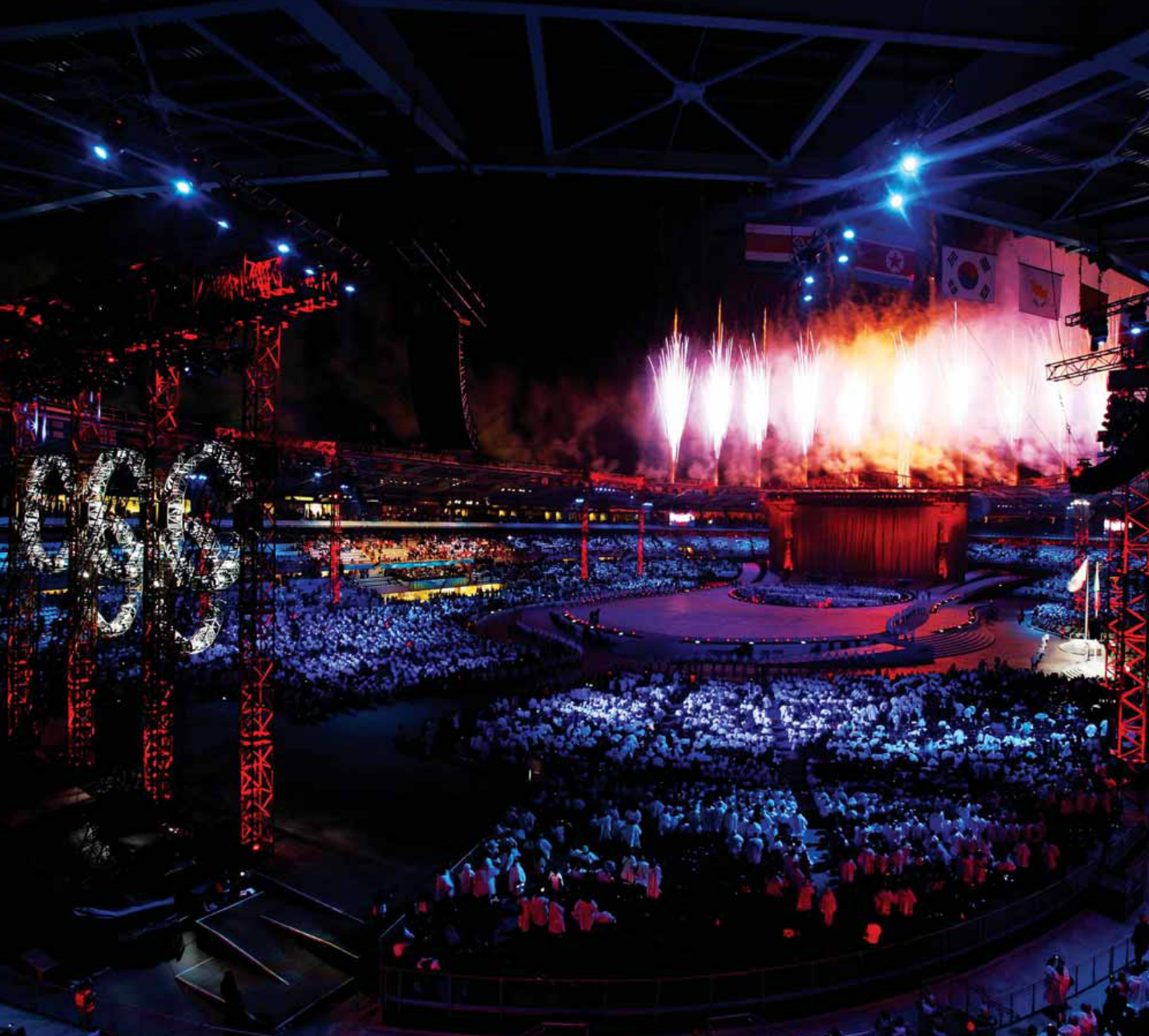

6
Tor in o 20 06
Olympic Tickets
The ticketing programme for the XX Olympic Winter Games in Turin was highly
successful. The excitement of Torino 2006 competitions and ceremonies attracted
visitors and spectators from Italy and around the world, who purchased 90% of
the available tickets. The programme reached its budget target on Day 6 of
competitions, and ultimately surpassed its goal by
€
5 million.
Torino 2006 tickets
Tickets Available 1,133,481
Tickets Sold 896,481*
Target Revenue € 64,400,000
Total Revenue € 66,000,000** [4% over target]
Ticket Sales to Public 495,000 [55%]
* This figure does not include 30,000 tickets sold for the training sessions at Palavela
** This figure represents the net to the Organising Committee after VAT
IOC Marketing Report – Torino 2006 l 103
Chapter I

104 l IOC Marketing Report – Torino 2006
Chapter Six l Ticketing
Ticket Promotions
The Marketing Department of the Turin Organising Committee was responsible for all technical aspects of
promoting the sale of Olympic Winter Games tickets to various target markets, including:
● the publiche public
● associations and federations for winter sports in Italy
● residents of the mountain and valley areas of the Piedmont Region
● schools and other educational organisations
Four major promotional approaches were used to raise awareness among these audiences:
● traditional advertising
● newspaper promotions
● direct mail
● sponsor points of sale
Olympic Sponsor Support
Several Olympic sponsors contributed to the success of the Torino 2006 Ticketing programme:
● Visa provided and operated the payment systems for the purchase of Torino 2006 tickets
● TicketOne offered Torino 2006 tickets online and at 350 retail points of sale
● Sanpaolo promoted and sold Torino 2006 tickets at 3,000 bank branches

IOC Marketing Report – Torino 2006 l 105
Ticketing l Chapter Six
Ticket Sales Process
The first phase of Torino 2006 ticket sales ran from November to mid-December 2004, with a random
selection system applied for cases in which demand exceeded availability. Buyers received official
notification from the Organising Committee confirming the purchase of tickets in January 2005.
The second phase of Torino 2006 ticket sales began in February 2005 with real-time sales. Buyers received
vouchers immediately and tickets were shipped to the purchasers’ addresses in December 2005.
Real-time Ticket Sale Channels
Location Available Sales Channels
Italy www.torino2006.org/tickets
Torino 2006 Call Center
3,000 branches of the Sanpaolo Group
350 TicketOne points of sale
European Economic Area www.torino2006.org/tickets
Torino 2006 Call Center
National Olympic Committees
All Other Countries National Olympic Committees
Torino 2006 Ticket Pricing Facts
17% of the tickets are priced between € 20 and € 30
33% of the tickets are priced between € 30 and € 50
24% of the tickets are priced between€ 50 and € 80
12% of the tickets are priced between € 80 and € 100
8% of the tickets are priced between € 100 and € 150
6% of the tickets are priced over € 150
Sports ticket price range: € 20 to € 370
Ceremony ticket price range: € 250 to € 850


7
Torino 2006 Licensing
The Torino 2006 licensing programme provided consumers with merchandise and
souvenirs that commemorated the XX Olympic Winter Games, represented the
Olympic image and expressed the unique spirit and identity of Torino 2006. The
licensing programme was a great success, with a large selection of apparel and
other merchandise that carried the Torino 2006 emblem, design elements,
pictograms and mascots available through a wide range of sales channels.
● Royalties from the sale of Torino 2006 merchandise provided support for the
Italian Olympic team and the staging of the XX Olympic Winter Games
● The Organising Committee established a sophisticated national and
international sales network of more than 2,000 authorised retailers of
official Torino 2006 merchandise
● During the Games the Olympic Superstore welcomed more than 300,000
customers
● Sales peaked with more than 22,000 receipts on 18 February 2006
● Torino 2006 continued strong Olympic traditions by developing programmes
for Olympic coins and stamps
IOC Marketing Report – Torino 2006 l 107
Chapter I

108 l IOC Marketing Report – Torino 2006
Chapter Seven l Licensing
Torino 2006 Licensing Facts
Official Licensees 32
Product Categories 35
Products Sold 540,000
Total Revenue € 16.7 million
Target Revenue € 15 million
Gross Games-time Sales [1 – 28 February] € 11.8 million
Licensing Programme Development
The Turin Organising Committee identified key principles for a successful licensing programme for the XX
Olympic Winter Games. These principles guided the development and activation of the programme, ensuring that
the programme suited the Italian marketplace, fostered strong partnerships and maximised sales opportunities.
Establishing Strong Partnerships
– The Turin Organising Committee built strong partnerships by
providing licensees with exclusive rights to major product categories that included a range of items. For
example, Asics – an Official Sponsor of Torino 2006 – was the exclusive Torino 2006 licensee for product
categories that included outerwear, sportswear, casual wear, clothing accessories, rucksacks and big bags.
Creating an Effective Distribution Network
– The Turin Organising Committee established a
sophisticated distribution network that provided consumers with a range of opportunities to
purchase official Torino 2006 merchandise through a variety of sales channels:
● multiple Olympic Stores throughout Italy
● efficient online purchasing opportunities
● effective concessions at Olympic venues
A full 70% of licensed merchandise sales were generated through the Turin Organising Committee’s
distribution network. The remainder resulted from partnerships with various National Olympic
Committees for sales outside Italy.
A Sophisticated Sales Network
– To ensure the success of the Torino 2006 licensed merchandise
programme, the Turin Organising Committee developed a sophisticated national, international
and e-commerce retail sales network. These networks shared the spirit of Torino 2006 with
the world by providing consumers with multiple channels for purchasing official merchandise
and souvenirs.


110 l IOC Marketing Report – Torino 2006
Chapter Seven l Licensing
Five Olympic Stores opened throughout Italy during the lead-up to the Games. The Olympic Superstore, a
2,000 square metre retail centre in Torino’s Piazza Vittorio Veneto, opened for business on 1 December 2006.
The Organising Committee also established strategic partnerships with major retailers and made
merchandise available online at w
ww.olympicstore.it
The Organising Committee also established agreements with the National Olympic Committees in Canada,
Japan and the United States to market official Torino 2006 merchandise in those countries. In addition,
Torino 2006 retail areas were created in airports in Austria, Sweden, Switzerland and Denmark.
National Retail Network
Olympic Stores: 5
Authorised Retailers: 2,000 +
Partnership with Carrefour Italia for national distribution: Retail “corners” in 40 Carrefour stores
E-commerce
Online sales in Italy and abroad via www.olympicstore.it
The Olympic Superstore
Types of Merchandise Available: 800 +
Superstore Customers: 300,000 +
Area: 2,000 square metres
Maximum Capacity: 1,200 people
Staff: 150
Venue Concessions
Open: Games Time
Venue Concession Areas: 40
Total Area: 1,500 square metres
Staff: 250

IOC Marketing Report – Torino 2006 l 111
Licensing l Chapter Seven
Olympic Sponsor Support
Olympic sponsors participated in the Torino 2006 licensing programme in various ways, furthering their
support for the XX Olympic Winter Games, providing high-quality merchandise to consumers and
contributing to the overall success of the programme:
● Visa International, a Worldwide Olympic Partner, supported the licensing programme by providing
the payment systems to facilitate the purchase of official merchandise.
● The Swatch Group – parent company of Omega, a Worldwide Olympic Partner – participated in the
programme as a licensee, creating high-quality timepieces that commemorated the Games. In
addition, the company created limited-edition timepieces to reflect its long history of support for the
Olympic Games, including the Omega Olympic Timeless Collection of six chronographs and the
Omega Pocket Watch 1932 – a replica of the Omega chronograph used by timekeepers at the 1932
Olympic Games in Los Angeles.
● Asics, an Official Sponsor, made clothing, accessories and other apparel with the Torino 2006 identity
available to consumers.
Successful Numismatic & Philatelic Programmes
Torino 2006 continued a long tradition in the Olympic Movement by creating Olympic coins and stamps that
commemorated the XX Olympic Winter Games.
The striking of Olympic coins began in ancient times, and was revived at the 1952 Olympic Games in
Helsinki. Torino 2006 struck 11 Olympic coins at the Italian Mint – the
Istituto Poligrafico e Zecca dello Stato
.
The collection of six silver coins and five gold coins depicted various Olympic winter sports disciplines,
monuments of the Turin region and the symbol of the Torino 2006 Olympic Torch Relay. Of nominal value
ranging from
€
5 to
€
50, the coins were distributed in Italy by the Mint, 3,000 Sanpaolo bank branches
and other group banks.
The Torino 2006 philatelic programme, which continued a tradition that began with the first modern
Olympic Games in Athens 1896, included a series of seven stamps. One stamp was dedicated to the Torino
2006 mascots, while the others celebrated the cities hosting Torino 2006 competitions. At the
commencement of the XX Olympic Winter Games, nine additional stamps were issued, with eight depicting
the Olympic winter sports and one dedicated to the Paralympics.

112 l IOC Marketing Report – Torino 2006
Chapter Seven l Licensing
Torino 2006 Official Licensees
Licensee Products
Asics Outerwear, sportswear, casual wear
clothing accessories, rucksacks, big bags
AAMS – Cosnsorzio Lotterie Nazionali “Gratta e vinci” programme
BHolding Notebooks and lenticular accessories
Boglaffi Posters
Caffarel Chocolate
Cattaneo Cravatte Ties, silk foulard and pochette
Codital Slippers
Dale of Norway Norwegian knitwear
EarBags Earwarmers
Editrice il Castoro Mascots books for children
Ferrino Mountain and trekking accessories
Fontanafredda Wines
Fun Box Board games
Giemme Writing instruments, mousepads and umbrellas
Giochi Preziosi Stuffed toys
Ikon Celebrative medals
Innov8 Scarves
ISM Ltd. Video games
Kelemata Perfume, lipstick
La Stampa Special projects
Lanterna Magica Home video cartoon
Mondo Balls, snow toys
Pastiglie Leone Candy pastilles
Ravensburger Puzzles
RCS – Gazzetta Dello Sport Sports-themed books, DVDs
Segway inc. Segway human transporter
Seri System Porcelain accessories [mugs, plates],
non-sport luggage, thermal bags, towels,
blankets in wool (non-Norwegian) and fleece
Sintesi Ski helmets, bibs, tubolars, headbands
Smoby Italia Die cast, pinball game
The Swatch Group Watches, stop-watches
Tecnoptic Eyewear
Trofè Pins, key chains



8
Protecting the
Olympic Brand
The value of an association with the Olympic Games is upheld by the strategies
and programmes that the Olympic Movement implements to protect the Olympic
brand and the Olympic partners’ exclusive marketing rights. In 2006, the Olympic
Parties – the IOC, the National Olympic Committees and the Turin Organising
Committee – combined their efforts to develop and execute strong initiatives to
protect the Olympic brand as well as raise awareness of the general public on
ambush marketing within the host country and worldwide. Employing successful
practices from past Games as well as innovative new methods, the 2006
Olympic Winter Games established a new standard in the protection of the
Olympic brand and partners’ rights.
IOC Anti-Ambush Campaign
For Torino 2006, the IOC developed for the first time an international
anti-ambush campaign implemented by the National Olympic Committees on
the prevention of ambush marketing for the benefit of the Olympic Movement.
The objectives of the campaign were to build awareness of the contributions of
Olympic sponsors, the threat of ambush marketing and the negative impact of
ambush marketing on the Olympic Movement. To this end, the IOC developed
and distributed a kit to National Olympic Committees providing guidance on
local implementation of the campaign.
IOC Marketing Report – Torino 2006 l 115
Chapter I
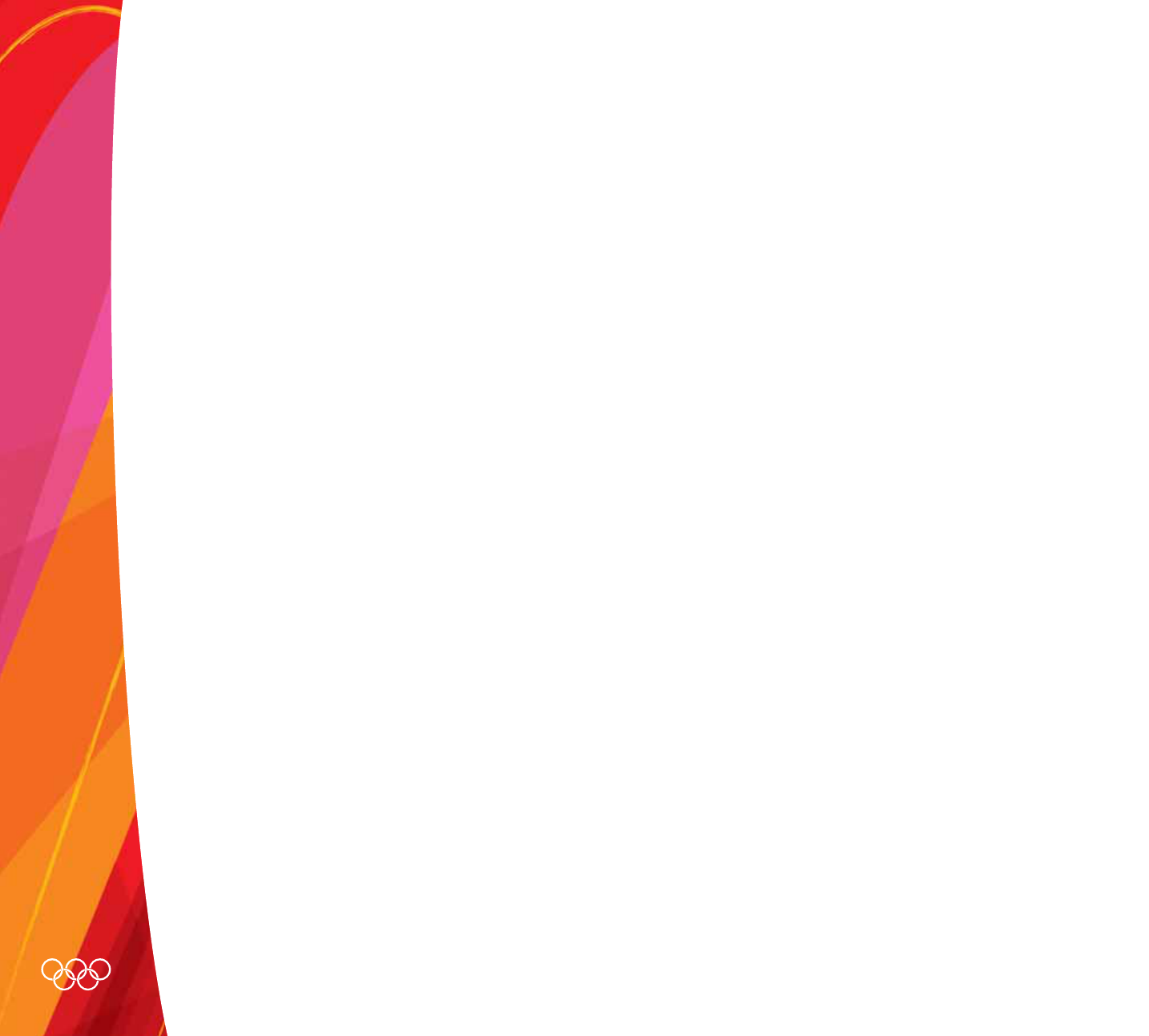
116 l IOC Marketing Report – Torino 2006
Chapter Eight l Brand Protection
The key messages of the campaign communicated the identities, roles and contributions of Olympic
sponsors, defined ambush marketing and the damage it can cause to the Olympic Movement and
presented ideas on how stakeholders can combat ambush marketing.
Contents of the Anti-Ambush Campaign Kit
● Two template anti-ambush print advertisements – one all text and one containing visual
● Template letter for local advertising agencies – to solicit their support in the anti-ambush effort
● Template press release communicating the key campaign messages
● Tips for local anti-ambush communications initiatives
● Post-campaign analysis questionnaire
Implementation
● Anti-ambush campaign kit sent to all NOCs participating in the Torino 2006 Olympic Winter Games
● Kit was produced in three languages – French, English and Spanish
● Intensified application, funding and customisation of the campaign in 11 key markets selected by the
IOC on such criteria as the history of ambush activities in the market, the relevance of winter sports
in the market and markets identified by the TOP sponsors. The 11 markets were: Belgium, France,
Germany, Japan, Korea, Mexico, Netherlands, New Zealand, Slovenia, Sweden and Switzerland.
Implementation Highlights
France
Advertisements were published from the end of January to the middle of February 2006, with
placement in the leading business newspapers
Le Figaro
and
Le Monde
(717,000 total circulation), in
the daily sports newspaper
L’Equipe
and in
L’Equipe Magazine
dedicated to Torino 2006 (724,000
total circulation) and in the two leading marketing and communication publications,
CB News
and
Stratégie
. The campaign was also featured on the French NOC website, the NOC newsletter
dedicated to Torino 2006 and will be included in the 2006 annual report. The NOC staged a major
press conference on 24 January 2006, which attracted attention from major French media.
Korea
The campaign was translated into Korean and placed in the magazines
Che Yuk
,
Kook Min Che Yuk 21
and
Si Min Che Yuk
, targeting a broad adult audience. On 6 February 2006, the NOC staged a major
press conference that attracted national print and broadcast media attention.


118 l IOC Marketing Report – Torino 2006
Chapter Eight l Brand Protection
The Korean NOC placed the campaign on its website and distributed leaflets and posters at national
sports festivals, to national federations, to local sports organisations, and to Korean NOC local
sponsors. Finally, the campaign was featured in the Korean public transport system:
● 3 Seoul subway lines – nearly 2.4 million passengers daily
● 1 Pusan subway line – more than 453,000 passengers daily
● Seoul buses – 33,357 passengers daily
● Pusan buses – 33,357 passengers daily
Mexico
As a result of a major press conference staged by the NOC of Mexico to address the subject of
ambush marketing and to introduce the anti-ambush campaign, seven major newspapers in Mexico
published articles on the subject on 2 February 2006. The NOC placed advertisements in the sports
newspaper
Esto
and the daily newspaper
La Prensa
(750,000 total circulation), in the sports
newspapers
Marcador
and
Ovaciones
and in the daily newspapers
El Universal
and
El Sol de Mexico
.
The NOC also featured the campaign in its magazine and on its website.
Japan
In February 2006, the NOC of Japan provided extensive national exposure to the anti-ambush
campaign by placing the Japanese announcements in numerous publications that covered a range of
key demographics and interests:
● The monthly magazine
Nikkei Business
targeting the business community, with a circulation of
331,000 per issue
● The sports magazines
VS
,
Sports Yeah!
and
Number
, with a combined total circulation of 322,000
● The magazines
Weekly Pia
,
Yomiuri Weekly
,
Sunday Mainichi
and
Caz & Mart
, targeting the adult
population, with a combined total circulation of 665,000

Brand Protection l Chapter Eight
● The TV guide magazines
TV Pia
,
TV Guide Torino Special
and
TV Station
, with total circulation of
704,000
New Zealand
In New Zealand, the campaign received extensive support from the NOC, with publication of the
print announcements in various daily newspapers, prominent coverage in NOC communications
platforms, and direct communication with journalists.
● In January and February 2006, the colour advertisement was placed in:
– the metropolitan daily newspapers
New Zealand Herald
,
Otago Daily Times
,
Dominion Post
and
The Press
, with total daily circulation of 434,483
– New Zealand’s 17 regional daily newspapers, amounting to 51 placements,
with total daily circulation of 241,421
– the national newspapers
Waikato Times
,
Sunday Star Times
and
National Business Review
targeting the business community, with
total circulation of 258,411
– the leading magazines
NZ Listener
,
North and South
and
Air New
Zealand
targeting a broad audience
● The campaign was featured in the NOC electronic newsletter
and NOC magazine. The NOC conducted direct discussions on
the issue of ambush marketing with the media and the issue
was raised in 17 different media platforms from January 12 to
21, 2006.
Key Results
● In certain countries up to 73% of the population was exposed to
the campaign
● NOCs were vital for the international implementation of the
campaign and played a key role when interacting with the local
media community
● Unprecedented interest of the media in ambush-related
matters
● Growing interest in the NOC community for brand protection
matters
IOC Marketing Report – Torino 2006 l 119

120 l IOC Marketing Report – Torino 2006
Chapter Eight l Brand Protection
Broadcast and Internet Monitoring
The IOC continued the highly effective practices of broadcast and Internet monitoring during the 2006
Olympic Winter Games. Designed to protect the Olympic Movement and the contractual rights of
broadcast and marketing partners, the sophisticated programme monitors global television broadcasts and
thousands of web sites for various infringements of Olympic marketing, broadcasting and clean venue
regulations:
● Any unauthorised use of the Olympic Marks
● Ambush marketing advertisements
● Commercial overlays on the Olympic Games broadcast, commonly referred to as “clean screen”
infringements
● Overt in-studio commercial signage or presence marketing
● Misuse and/or unauthorised use of Olympic properties and/or rights by broadcasters rights holders,
Olympic sponsors and NOC sponsors
● Olympic athletes’ and TV presenters’ manufacturers’ label on their clothing exceeding 20cm
2
in size
Compliance monitoring successfully identified infringing material in markets of concern, enabling the IOC
to act swiftly for the removal of such activity to protect the Olympic brand and the rights of sponsors,
broadcasters and licensees.
● The Olympic broadcast was monitored in 35 key markets
● An efficient communications network and reporting system was constructed between field analysts
in 35 countries, the monitoring agency’s offices in several countries, and the IOC officials in Turin
● The programme included around-the-clock monitoring over the course of the first three days of
competition
Clean Field of Play
The Olympic Games is the only major event in the world today that, as a matter of strict policy, maintains a
commercial-free field of play, with very limited branding allowed. A clean field of play emphasises sport over
the commercial agenda and protects the Olympic brand. This standard also eliminates distracting messages
from the field of play and differentiates the Olympic Games from virtually all other sporting events.
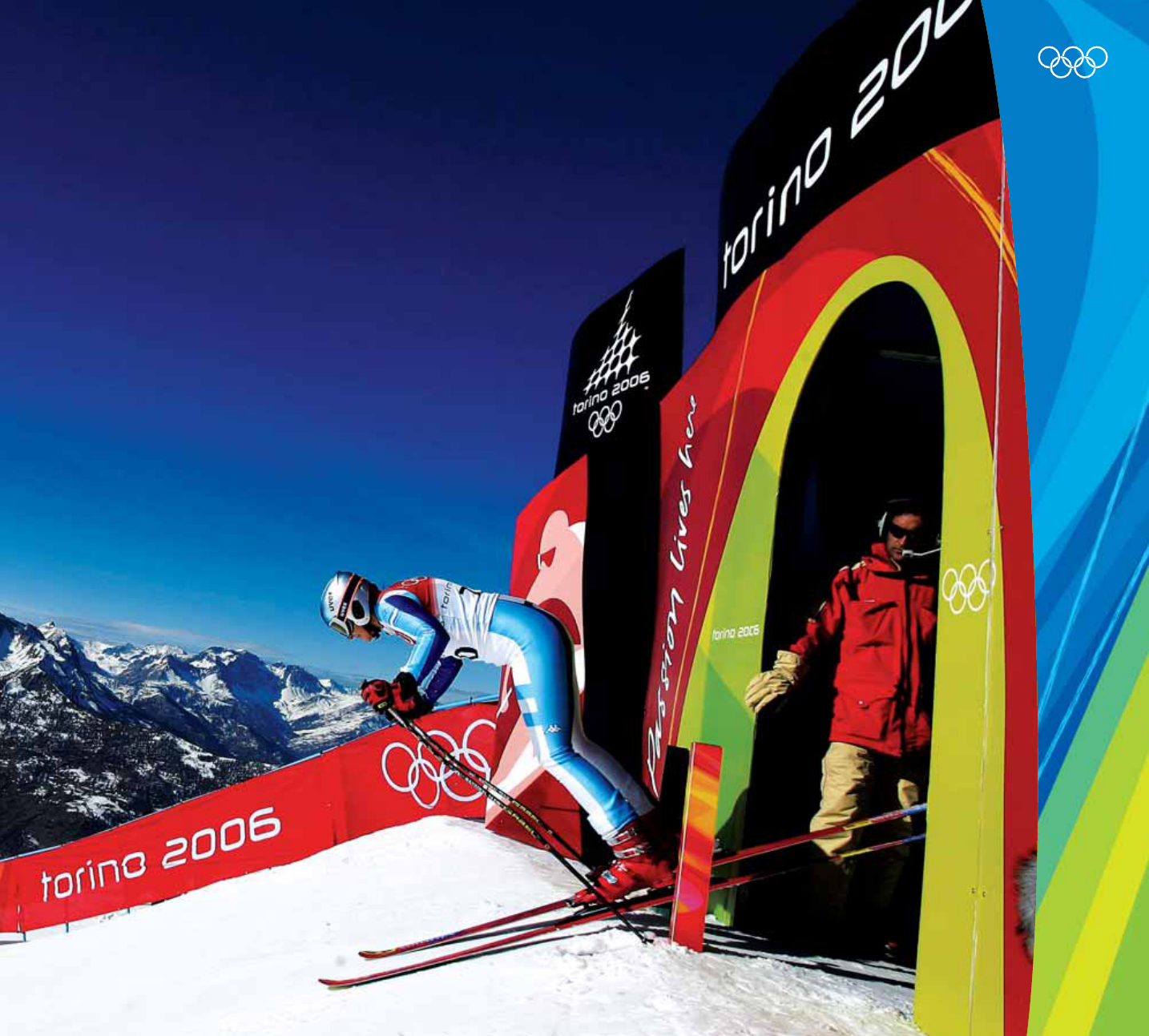


Brand Protection l Chapter Eight
● For several years before the Games, the IOC educated the Turin Organising Committee on branding
policies and measures for ensuring strict compliance
● In the year leading up to the Games, the Organising Committee trained venue managers and other
personnel on policies and practices for ensuring a clean field of play
● In the weeks and days prior to the Games, IOC brand protection teams toured all venues to ensure
compliance with branding guidelines
● During the 2006 Olympic Winter Games, specialists and trained volunteers were deployed daily to
ensure branding compliance and to protect the rights of Olympic partners
● The broadcast monitoring programme was instrumental in maintaining a clean field of play, as it
enabled further analysis of critical areas
● For more than a decade, the IOC has worked with sporting good manufacturers worldwide to
establish the Sports Goods Industry Marketing Code, an agreement that establishes a standard of
fair marketing practices by sporting goods companies regarding the Olympic Games,
Olympic imagery and Olympic athletes
● Athletes, NOCs, IFs and sports equipment manufacturers also contribute
to setting a unique visual stage for the Games by adapting athletes’
uniforms to Olympic standards which limit commercial branding
Throughout the Community
● The support of venue cities and other non-
commercial bodies was instrumental to ensure a
consistent brand image for the Olympic Games which
avoided brand dilution and risks for ambush marketing
● Criminal, financial and civil law enforcement
authorities from federal, provincial and municipal levels
united forces to combat counterfeit merchandise and
ambush marketing
IOC Marketing Report – Torino 2006 l 123

124 l IOC Marketing Report – Torino 2006
Chapter Eight l Brand Protection
Olympic Marks Approval
Olympic partners communicate their association with the Olympic brand through the use of
Olympic marks, imagery and references. To protect the Olympic brand and to ensure the value of
Olympic association for all Olympic partners, all such executions must adhere to established standards
of proper usage.
The standards for proper usage of Olympic marks are guided by Olympic Charter and detailed in the
Olympic Marks & Imagery Usage Manual
published by the IOC. With these resources as a basis, the IOC
and the Organising Committees review all materials, executions and communications of Olympic
sponsors, broadcasters and other Olympic entities that include Olympic references, imagery or marks to
ensure compliance with guidelines for proper usage. Furthermore, the IOC and the Organising Committee
work to protect the rights of all Olympic partners by preventing and confronting the unauthorised use
of Olympic marks, imagery or references by non-Olympic partners.
The Olympic Marketing Extranet online communications resource is instrumental in managing the
process of Olympic marks approval worldwide. Known as Athena and managed by IOC Television &
Marketing Services, the extranet provides Olympic partners with an efficient and effective means of
submitting materials and executions for review and receiving timely approval.



9
Acknowledgements
The Olympic broadcast partners
United States – National Broadcasting Company Inc. (NBC)
Canada – Canadian Broadcasting Corporation (CBC)
Central/South America – Organizacion de la Television Ibero-Americana (OTI)
Europe – European Broadcasting Union (EBU)
Australia – Seven Network Limited
New Zealand – TV New Zealand (TVNZ)
Asia – Asia-Pacific Broadcasting Union (ABU)
Japan – Japan Olympic Pool
Korea – Korean Olympic Pool
South Africa – Supersport International
Middle East – Arabic Radio and Television (ART)
IOC Marketing Report – Torino 2006 l 127
Chapter I

128 l IOC Marketing Report – Torino 2006
Chapter Nine l Acknowledgements
Worldwide Olympic Partners
Main Sponsors
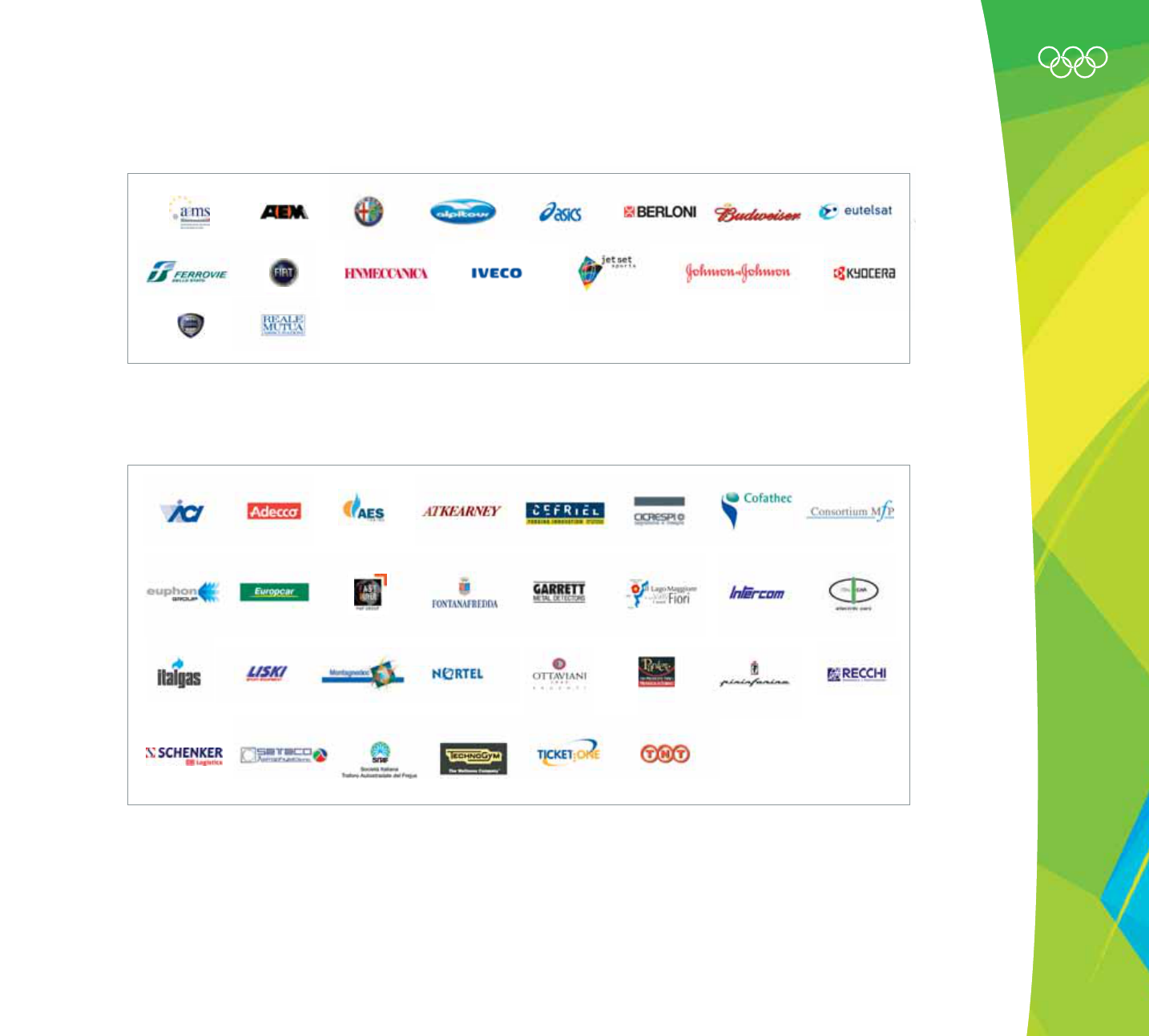
IOC Marketing Report – Torino 2006 l 129
Acknowledgements l Chapter Nine
Official Sponsors
Official Suppliers
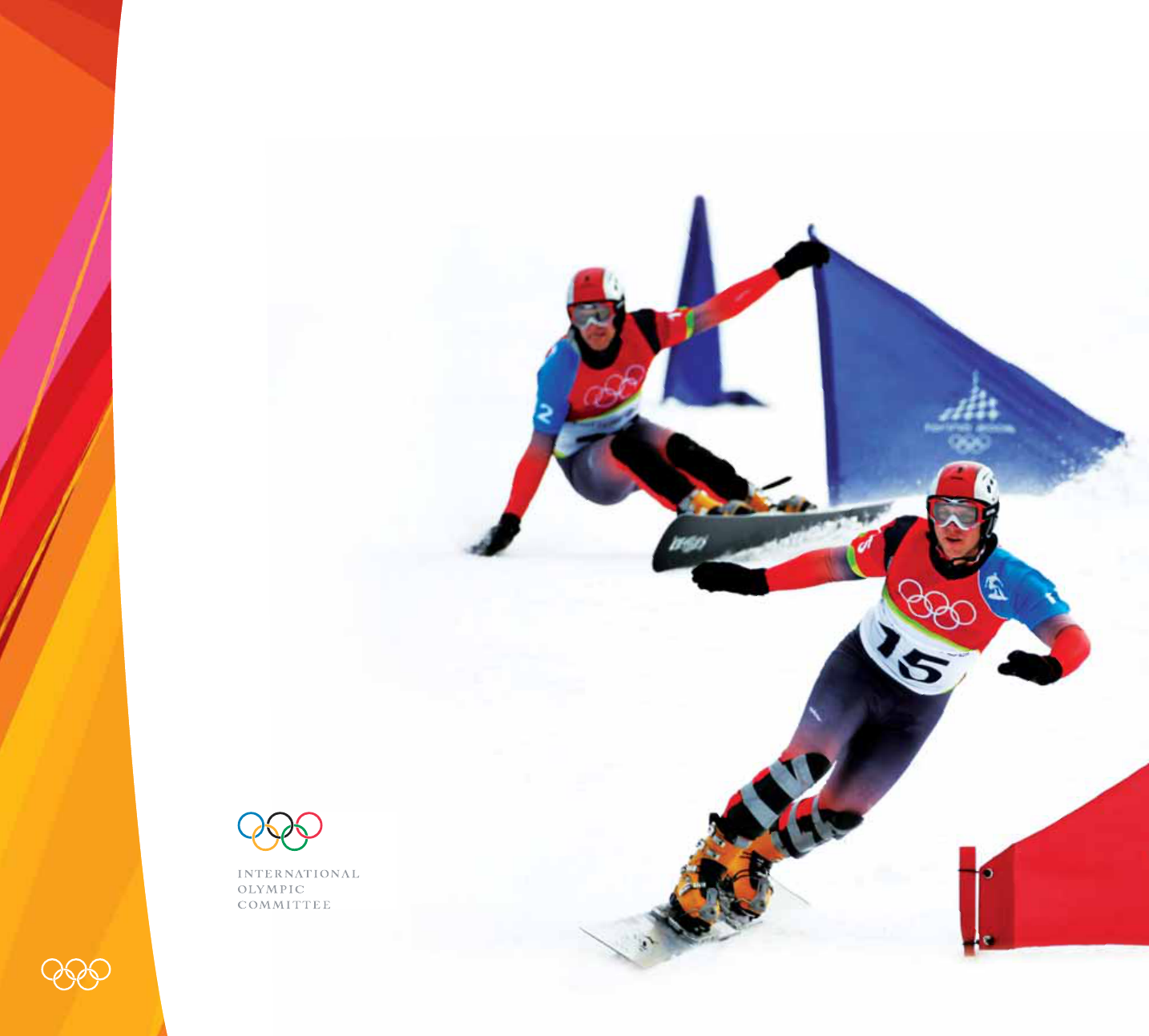
130 l IOC Marketing Report – Torino 2006
Chapter Nine l Acknowledgements
Editorial / Writing
Karen Webb – IOC Television & Marketing Services
Chris Redgate
Design and Production
Touchline
Photography
IOC, Getty Images, Touchline,
AFP, Bongarts, Corbis
Research
Sports Marketing Surveys (SMS)
Sponsorship Intelligence (SI)
IOC TMS
International Olympic Committee
Château de Vidy
1007 Lausanne, Switzerland
Tel: +41 21 621 61 11 Fax: +41 21 621 63 59

